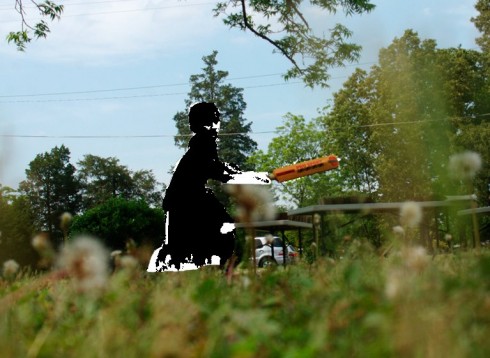[…] the whole idea of revenge and punishment is a childish daydream. Properly speaking, there is no such thing as revenge. Revenge is an act which you want to commit when you are powerless and because you are powerless: as soon as the sense of impotence is removed, the desire evaporates also.
Who would not have jumped for joy, in 1940, at the thought of seeing S.S. officers kicked and humiliated? But when the thing becomes possible, it is merely pathetic and disgusting.
–Orwell (1945): Sour Revenge in the Tribune. (Found via Megan McArdle).
Over the last couple of weeks, students have been reading and presenting newspaper articles every morning, so, inevitability, we had a few good opportunities to discuss the death of Osama bin Laden.
The discussions were remarkably mature, and quite edifying to hear, because it was pretty much what one would hope to occur among Montessori kids who’ve been dealing with the peace curriculum since pre-school.
There was remarkably little jubilation. So much so, that one student asked, “Are we not supposed to feel happy?”
The answer was that yes we can feel happy and relieved but we shouldn’t “spike the ball”, letting the celebration get so out of hand that it antagonizes bin Laden’s supporters even more, and makes us seem as arrogant as they caricature us to be. If we want to achieve peace we need to be better than that.
Their broader perspective is somewhat akin to what Thich Nhat Hanh, a Zen monk, expressed a couple weeks after the September 11th attack (thanks to Julie H. for the link to the interview by Anne A. Simkinson).
All violence is injustice. The fire of hatred and violence cannot be extinguished by adding more hatred and violence to the fire. The only antidote to violence is compassion. And what is compassion made of? It is made of understanding. When there is no understanding, how can we feel compassion, how can we begin to relieve the great suffering that is there? So understanding is the very real foundation upon which we build our compassion.
[…]
There are people who want one thing only: revenge. In the Buddhist scriptures, the Buddha said that by using hatred to answer hatred, there will only be an escalation of hatred. But if we use compassion to embrace those who have harmed us, it will greatly diffuse the bomb in our hearts and in theirs.
–Thich Nhat Hanh (2001): What I Would Say to Osama bin Laden (Interview by Anne A. Simpkinson on BeliefNet.com)
There’s also a poignant reflection by Megan McArdle, a New Yorker, who was, at first, extremely angry and eager for revenge, but has become much more reflective, and cognizant that we share both humanity and mortality with even Osama bin Laden.
McArdle elaborates more here.

